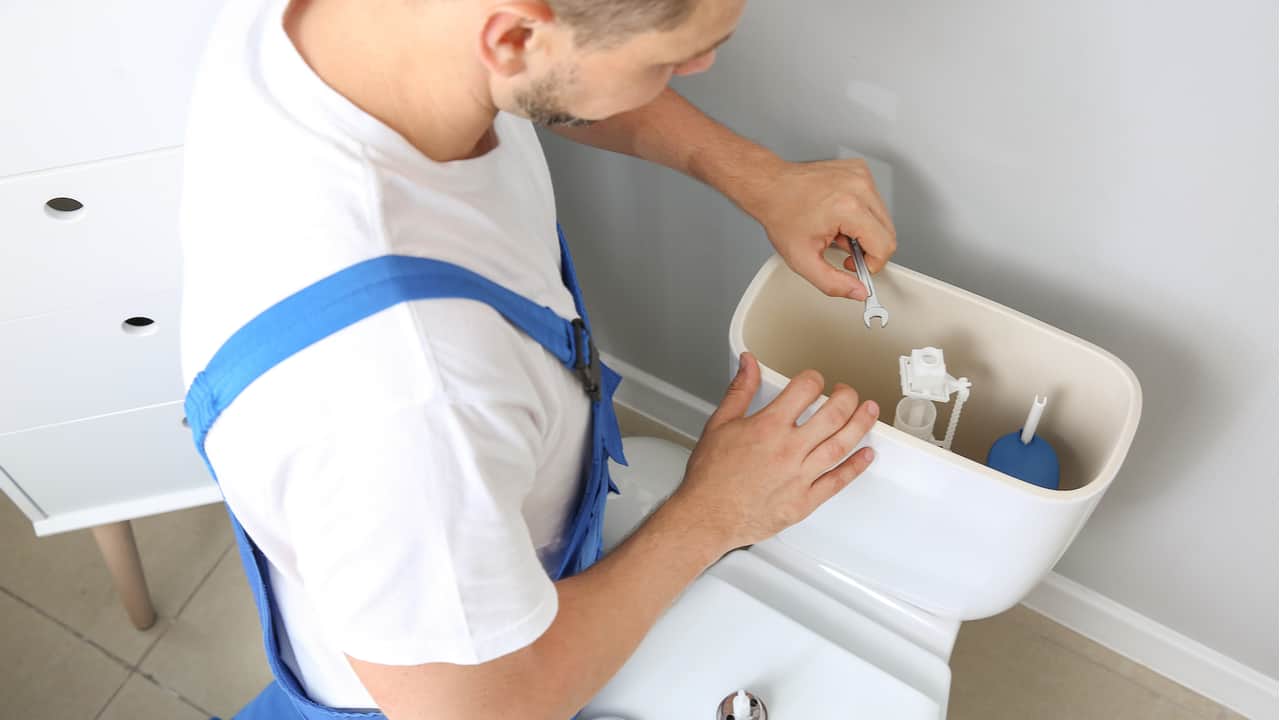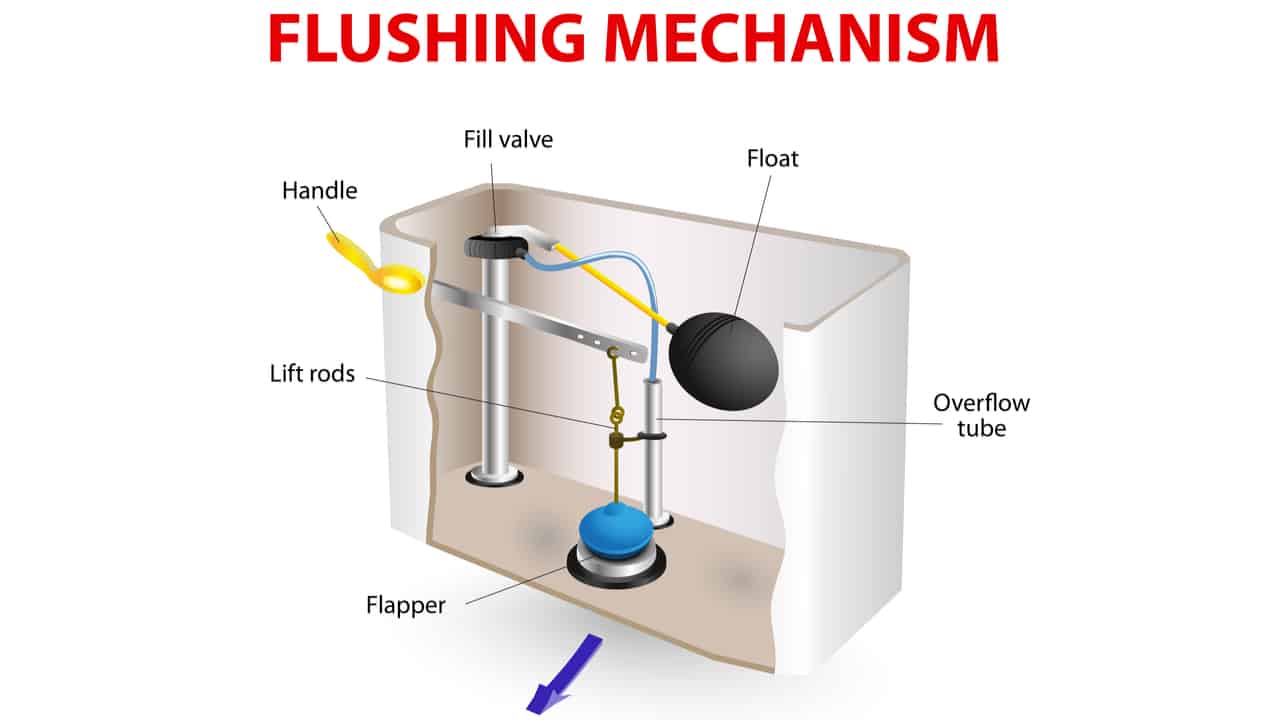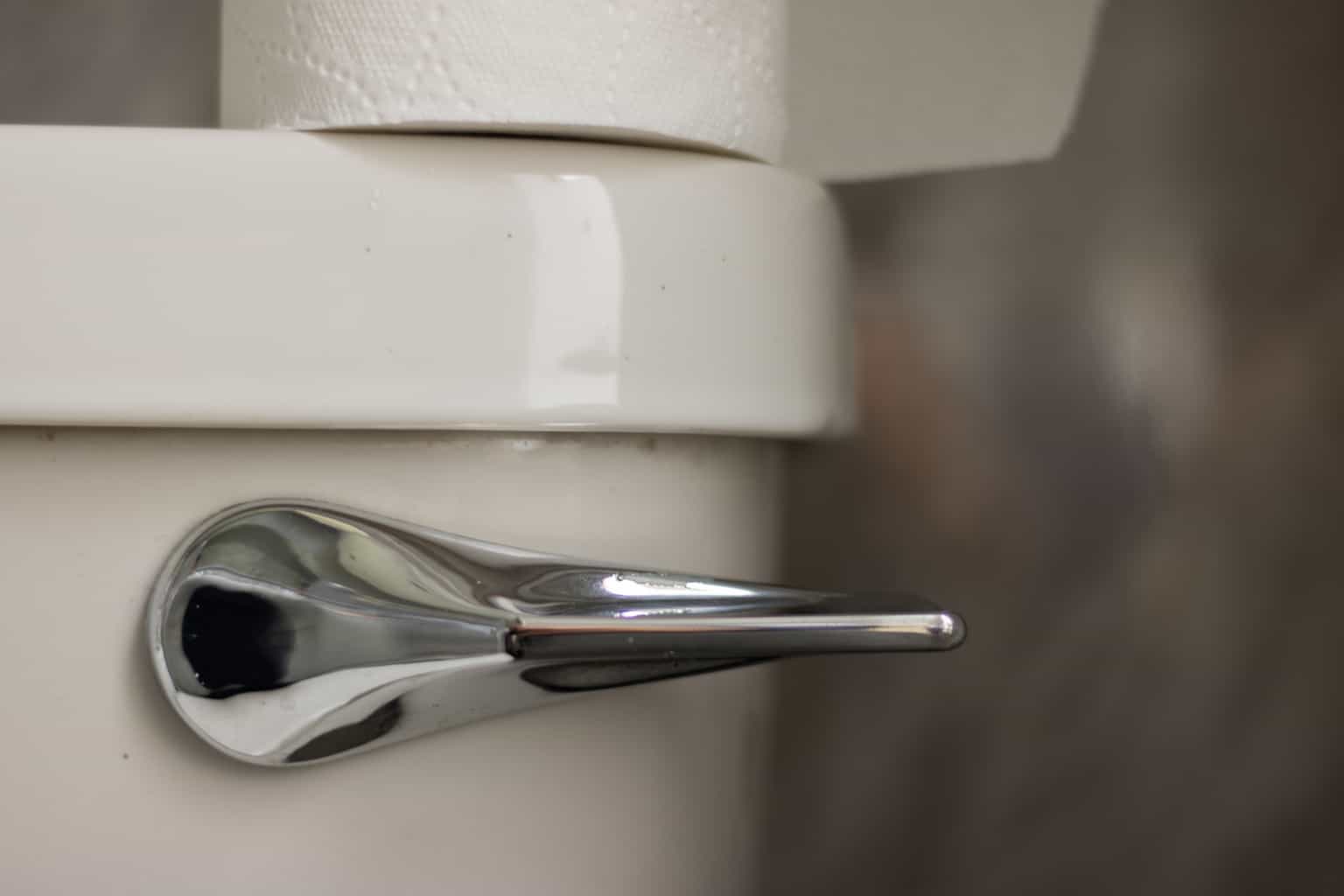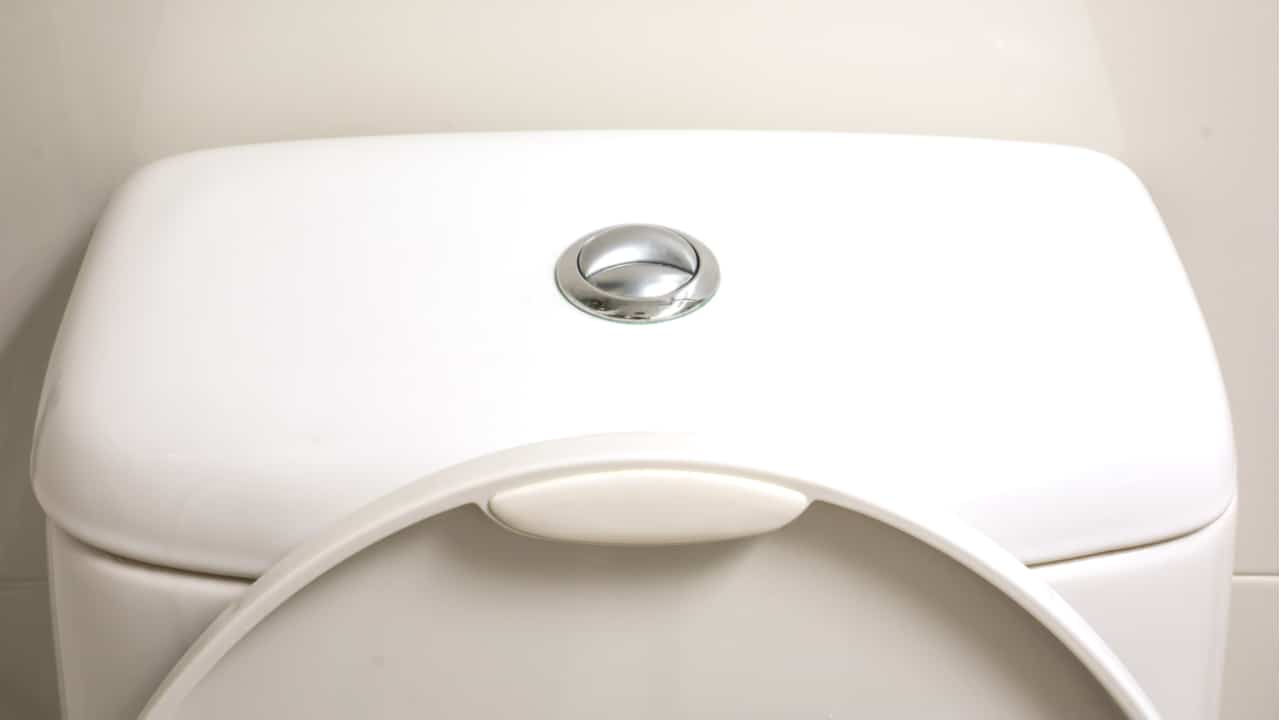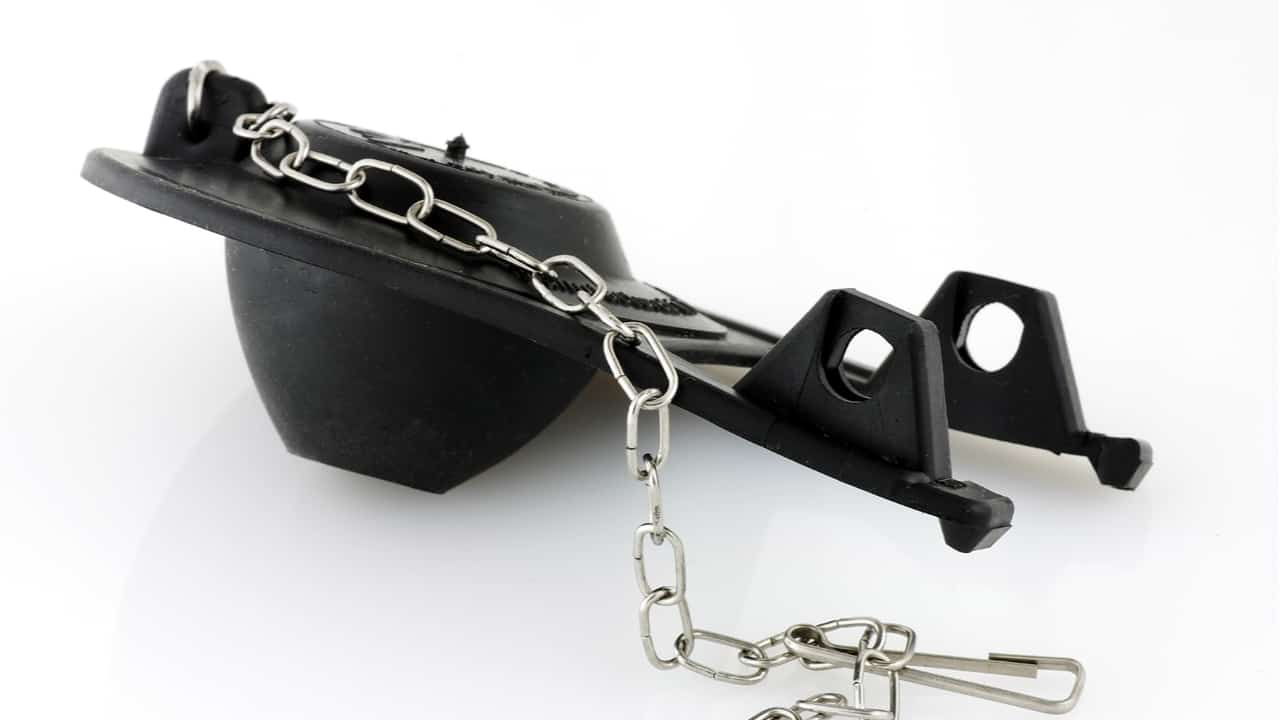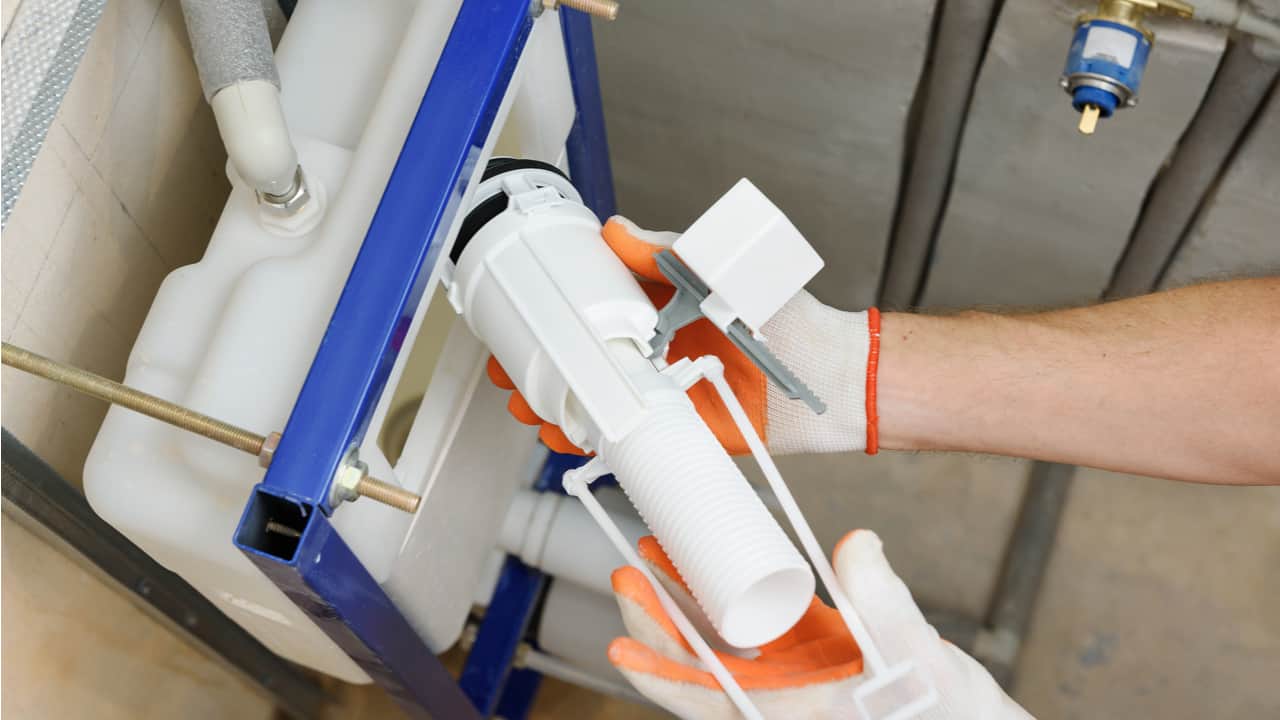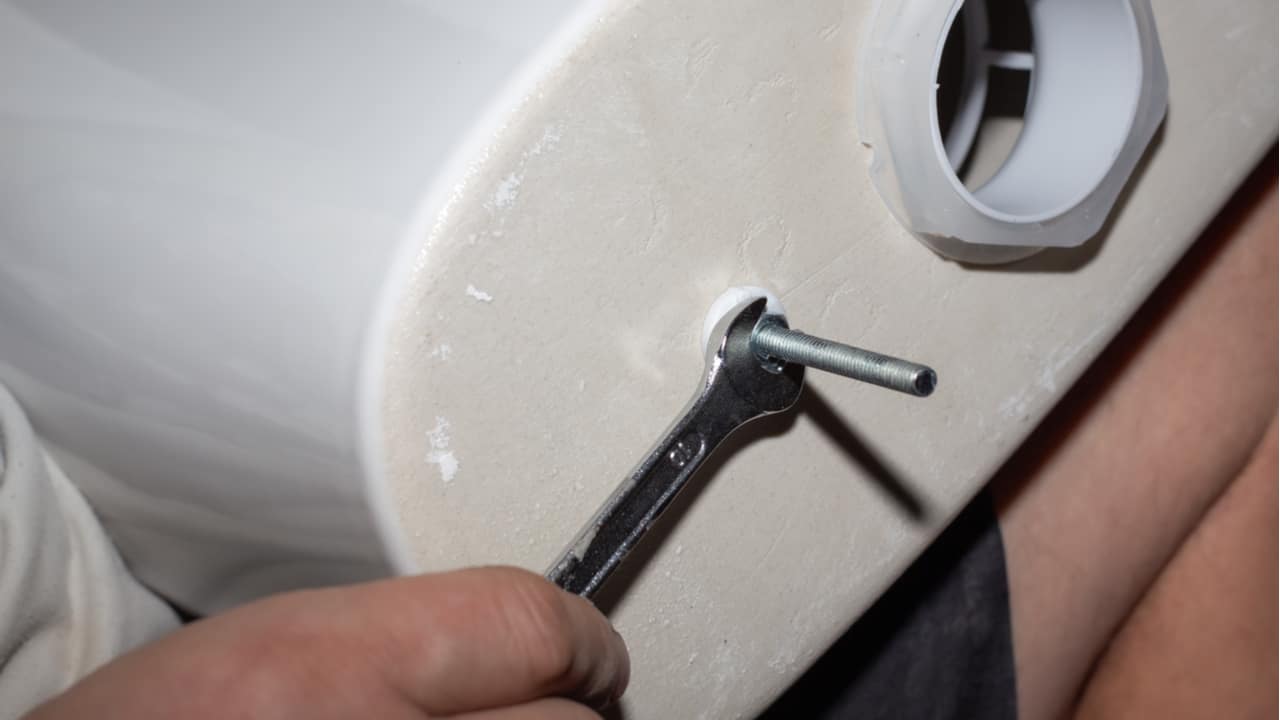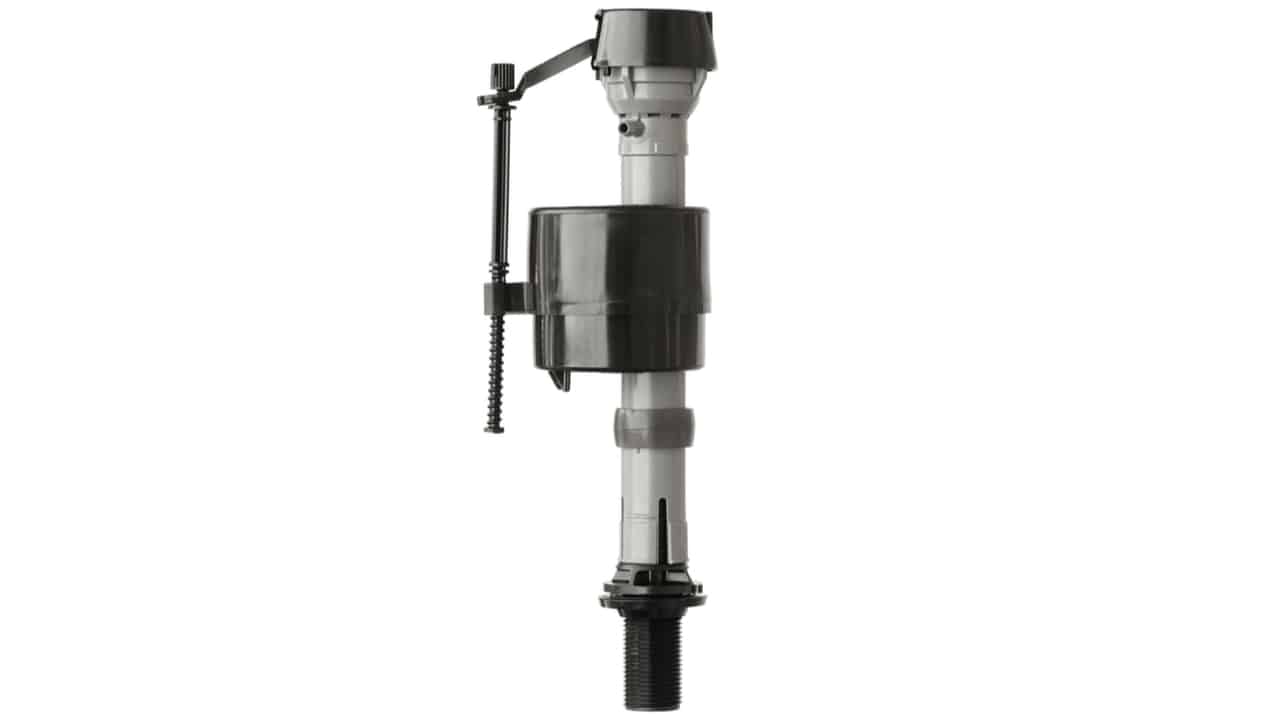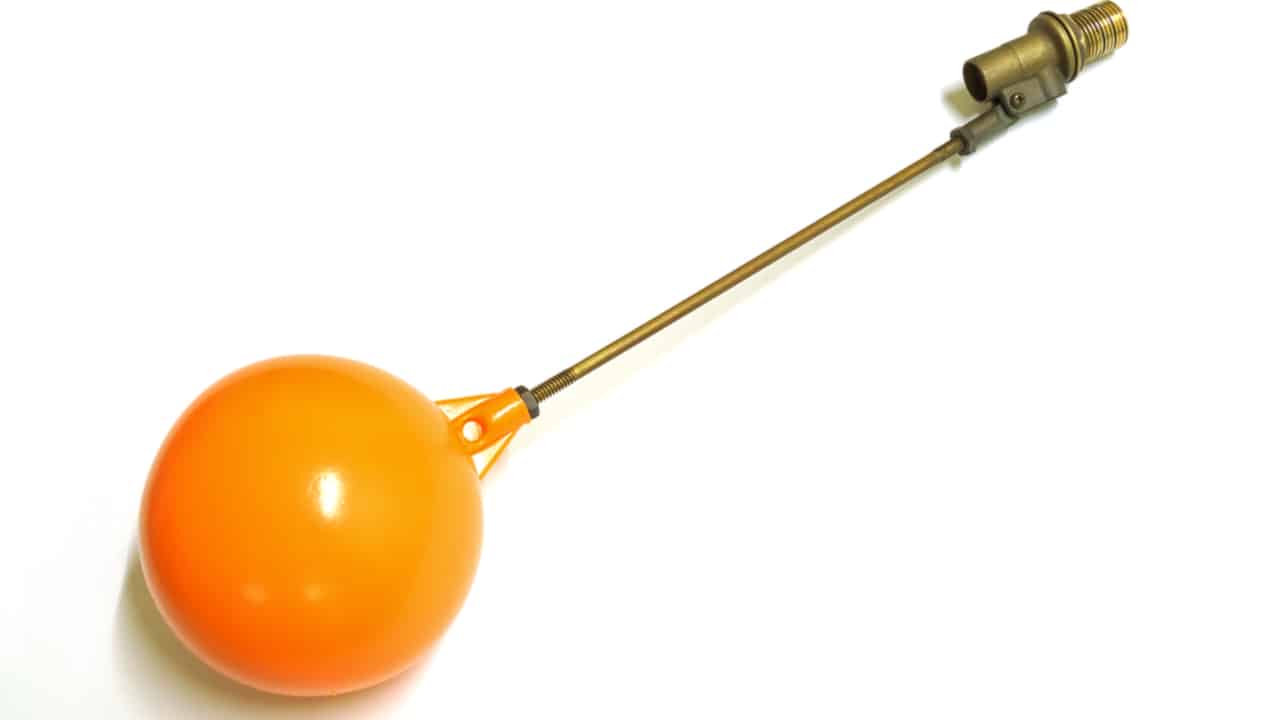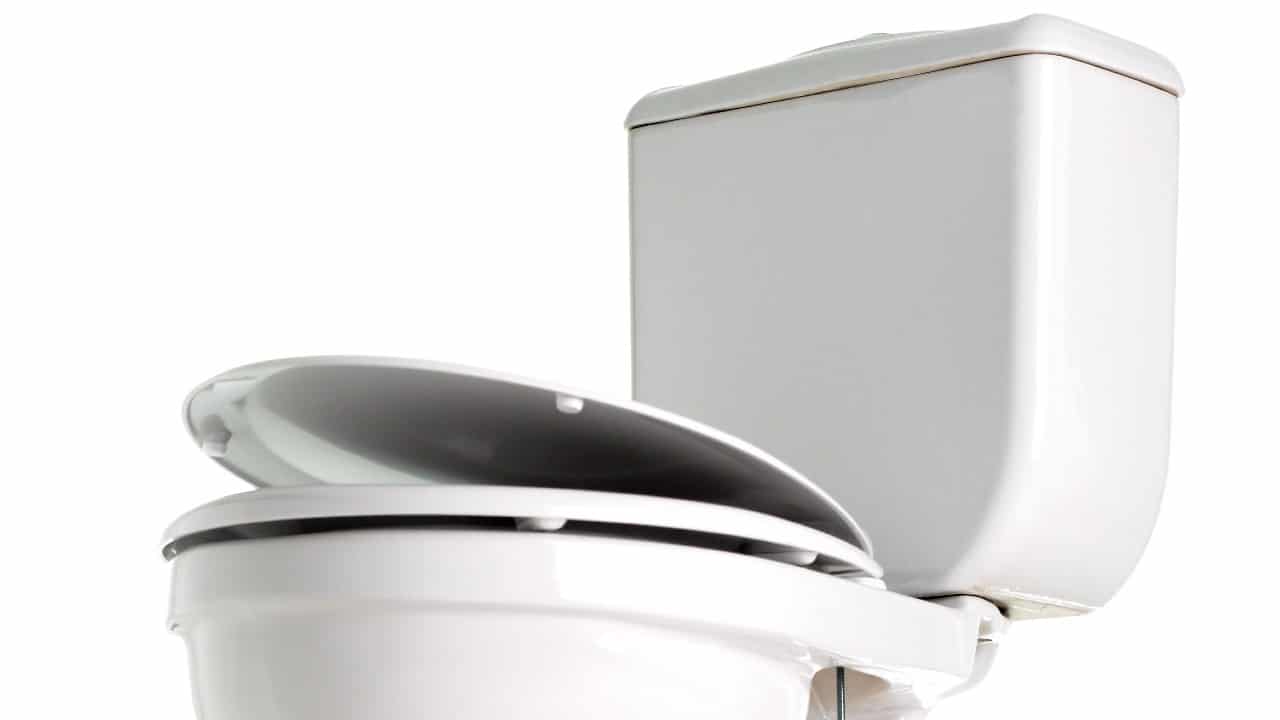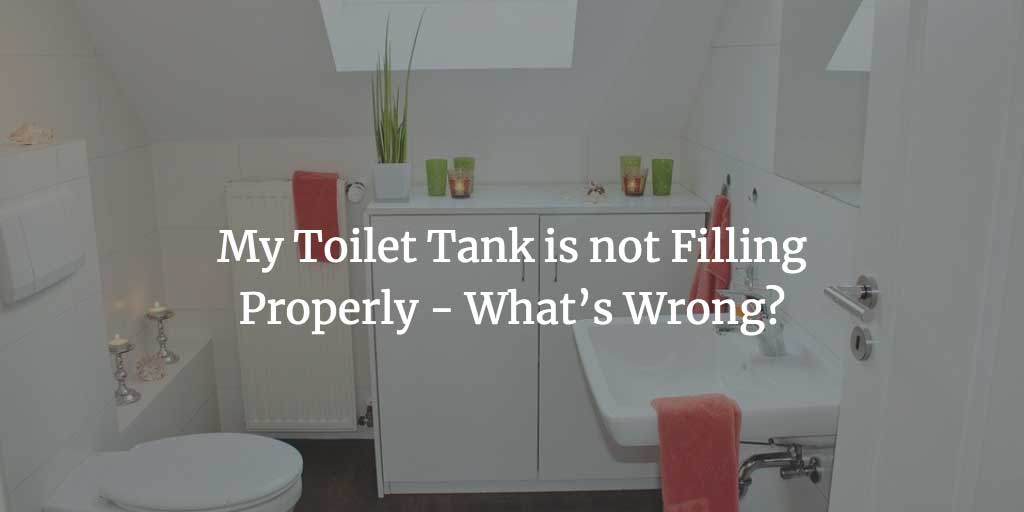When it comes to toilet tank parts, everybody knows about the two main ones – the toilet tank (typically made out of porcelain) and the toilet bowl (typically made out of vitreous china). Usually installed on the top of the toilet bowl, the toilet tank allows water to flow into the bowl.
Obviously, the primary purpose of toilet tanks is to provide the aforementioned bowls with a sort of water supply. This water supply allows the homeowner to use the toilet’s flushing mechanism (which itself consists of parts like the rubber flapper, float valve, flush valve seat, float arm, lift rod, etc) to flush down the contents of the bowl.
In order for this whole apparatus to be flushing correctly, a large amount of water has to be suddenly dumped into the bowl. This process initiates the so-called “siphon effect”. However, with the water pressure in most households being insufficient to achieve this, the role is usually taken over by the toilet tank.
The parts to the toilet tank can be separated into two main categories: the ones involved with the refill mechanism and the ones involved with the flush mechanism. The former category of toilet tank parts consists of a refill tube, a toilet float, and the fill valve. The latter category, on the other hand, includes a flush valve, a toilet flapper, and the tank lever.
Another thing worth mentioning here is that most modern toilets themselves can be separated into two types. These would be one-piece toilets and two-piece toilets. Unlike the one-piece toilet, a two-piece model is prone to a lot more toilet problems (such as leaking) as it consists of more parts.
Contents
Toilet Tank Parts Diagram
Here’s an illustration that greatly helps with understanding the parts to the toilet tank:
Parts of a Toilet Tank
It’s pretty safe to say that most toilet parts are universal. That is precisely why there are companies like Korky and Fluidmaster – while they design, manufacture, and sell toilet replacement parts and kits used for toilet repairs, they do not manufacture the toilets themselves.
The aforementioned toilet repair kits can be of great use. In order to buy the correct kit, one needs to determine the serial number of his model. Doing this is quite simple – just lift up the tank lid and check the interior walls for the number.
In case your toilet runs constantly or you’re experiencing any other toilet-related issue, you can either completely rebuild the whole toilet tank or just replace one of the toilet parts, whether that’s a bathroom floor flange, wax ring, toilet flange (also known as the closet flange), drain pipe, toilet lever, toilet bolts, fill valves, flapper valve, flush valve seat, or even the toilet seat itself.
All parts of a toilet work together to remove the contents of the bowl as quickly and smoothly as possible. Replacing all of them with completely new toilet parts is advised only when you’re having severe issues with flushing.
All in all, tanks are quite a bit more complicated than bowls. In fact, the only thing there is to say about bowls is that, on today’s market, two primary types of toilet bowl shapes are available – round and elongated toilets.. These are single-piece, solid-state objects without any moving parts, which certainly isn’t something you can say for tanks.
Here’s a closer look at the most important tank toilet parts:
Toilet Tank Lever
Typically located on the left-hand side of a toilet tank, the lever is a simple toilet handle that, once pushed downwards, commences the entire process of flushing. This is why a lot of people call it the flush handle.
A flush handle is typically found on a single-flush toilet. However, the other type of toilets – the dual-flush ones – is usually equipped with push buttons, which are typically found on the toilet tank.
In most cases, there will be a small button and a big button. The first one is used for half-flushing and the second one for full toilet flushes. However, a simple toilet handle is still present on far more toilets around the world than these buttons, even though it’s not as economic as they are.
Toilet Tank Lid
The next important part is the toilet tank lid. Typically manufactured from the same material as the tank itself, this is a simple cover that’s located on the tank’s top. Its job is to prevent dirt from polluting the tank water.
Unfortunately, this is one of those toilet tank parts that are quite prone to damage – the lid can very easily fall off and break. It’s one of the most readily available toilet replacement parts though, so getting a new one is as easy as it gets. The only thing you’ll need (besides money, of course) is your closet’s model number for reference.
Toilet Flapper
This part would be a very simple rubber seal that is typically located at the tank’s bottom. Its purpose is a dual one – when you’re flushing, the toilet tank flapper allows water to go from the tank to the bowl. However, the toilet flapper also stops water from going to the bowl when you’re not flushing – pretty simple, isn’t it?
The opening and closing of the toilet flapper are regulated by a simple, thin link chain inside the tank. Are you having issues with a constantly running toilet? If that’s the case, you don’t have to buy a new toilet – you’ll probably just need to replace the flapper.
Flapper Lift Chain
The thin link chain that connects the aforementioned flapper with the toilet tank lever is called the flapper lift chain. This part stays slack most of the time, i.e. whenever the lever is not in use.
Once you push down the lever in order to flush the toilet, the lift chain pulls the flapper upwards and the water can freely flow into the bowl. During the toilet installation, it’s important to ensure that the lift chain is not too tight (which can lead to a running toilet) or too slack (which will prevent you from achieving a full flush).
Toilet Flush Valve
The next part worth taking a closer look at is the flush valve. Flush valves are openings present on the bottoms of the toilet tanks and their purpose is to allow the water to move from the tank to the toilet bowl. A toilet flush valve will be typically between 2” and 4” big and have a flapper sitting on its top.
With time, a flush valve can easily become cracked, causing the occurrence of leakage between the toilet bowl and the tank. To replace a cracked flush valve, one needs to remove the entire tank – it’s a time-consuming toilet repair task, to say the least.
Kohler toilets come equipped with a flush valve that’s a bit different than the ones found on most other models. Its full name is the canister flush valve. Unlike regular valves, which use the flapper, a flush valve of this type uses a canister that lifts off entirely during a flush.
Toilet Overflow Tube
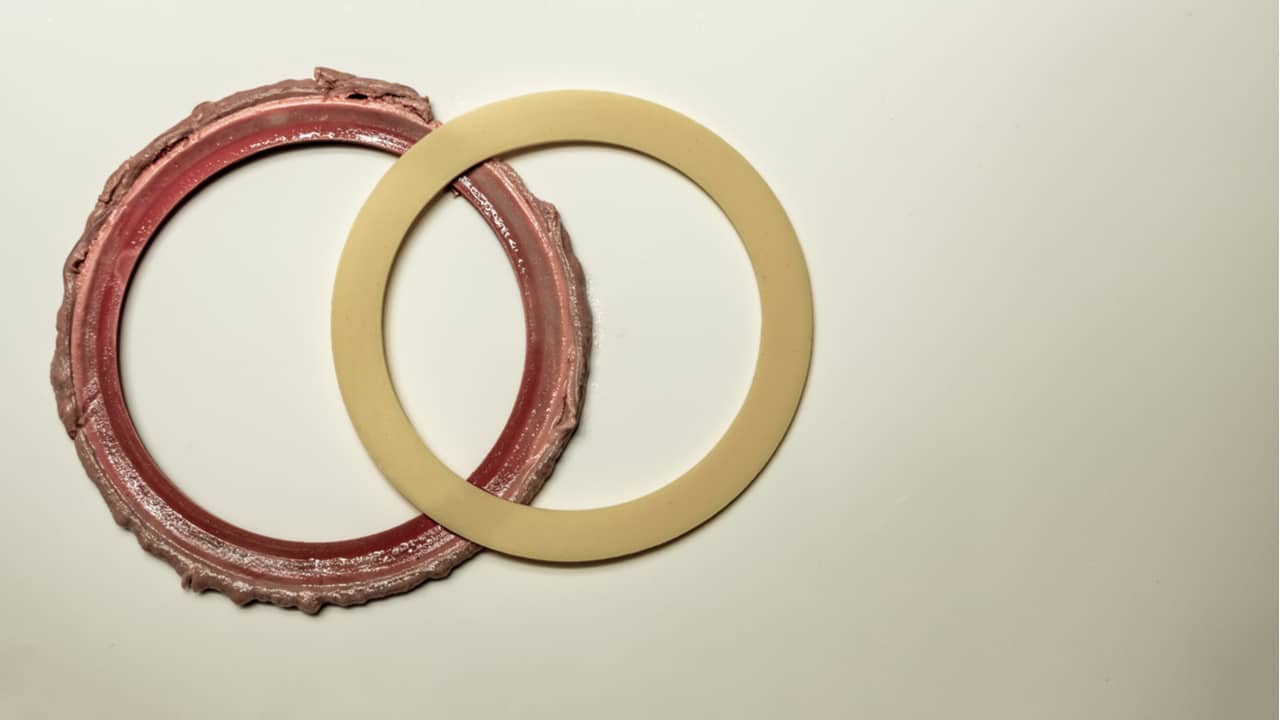 Sporting a cylindrical shape, the toilet overflow tube is typically located in the tank’s middle area. The role of the overflow tube is to remove all the excess water from the tank by sending it into the bowl. Since this prevents flooding from occurring, we can safely say that the overflow tube is the “failsafe” of the toilet.
Sporting a cylindrical shape, the toilet overflow tube is typically located in the tank’s middle area. The role of the overflow tube is to remove all the excess water from the tank by sending it into the bowl. Since this prevents flooding from occurring, we can safely say that the overflow tube is the “failsafe” of the toilet.
As it is connected to the flush valve, the overflow tube ensures that the water that’s present inside the tank ends up only where it should – in the toilet bowl.
Behind this peculiar name hides a part that’s actually very simple – this is a basic rubber seal that covers the exterior part of the flush valve.
It prevents the water from leaking between the bowl and the tank during a flush by providing a very tight seal. If a leak does occur, there’s a pretty good chance there’s something wrong with this part – it’s probably worn out. Unfortunately, replacing the toilet tank-to-bowl gasket is yet another kind of toilet repair task that requires the removal of the entire tank.
Toilet Tank Bolts
The tank bolts usually come together with steel and rubber washers. As you can already guess, these parts are used to connect the toilet bowl with the toilet tank.
Instead of having bolts going through the tank’s interior, the newest Kohler tanks come with special brackets for such bolts, which greatly simplifies the entire toilet installation process. It also significantly reduces potential leaking issues.
However, after years of use, the bolts can become rusty and cause leaking to occur between the bowl and the tank. If you ever find yourself in a situation where you have to replace the bolts, make sure to check if everything’s alright with the flush valve and the aforementioned tank-to-bowl gasket while doing so.
If you have a one-piece toilet, it likely doesn’t have tank bolts. Check out this One Piece vs Two Piece Toilet comparison for more information.
Toilet Fill Valve
Here we come to an exceptionally important part of every toilet tank – the fill valve. The purpose of a toilet fill valve is to fill the tank with water after every flush. The fill valve gets this new water from the water supply line, which is located underneath the tank. Check out this post if your toilet tank is not filling properly.
Other parts that are connected to the toilet fill valve are the refill tube and the toilet float. To find your fill valve, check the tank’s left-hand side. A fill valve that’s not working properly is typically characterized by a toilet that makes a hissing sound, that won’t fill, or that simply won’t stop running. Fortunately, replacing a faulty fill valve is both easy to do and doesn’t cost much.
Toilet Float Ball
Now that we’ve covered the fill valve, it’s time to take a look at the float ball, another very important part of every toilet tank. Toilet float balls – also commonly called toilet floats – are balloon-shaped parts made out of plastic that are connected to the fill valve by plastic or metallic arms. This simple object controls the closing and opening of the fill valve.
When the tank is full and not in use, the ball sits at the tank’s top. Whenever you flush down the contents of the bowl, however, this ball quickly falls down to the tank’s bottom, opens the aforementioned fill valve, and allows the tank to be filled with water again.
Once there is enough water inside the tank, the ball will stop and the fill valve will shut. Although still quite common, the float ball is rarely found in the newest toilets.
Float Cup
The way in which this part works is very similar to that of the float ball, with the main difference being the size – the float cup is smaller. It is typically found on the top of the fill valve, where it has the job of closing and opening the said device.
This type of toilet float is found in every modern toilet. It makes tanks more compact, particularly if we take into account the fact that these contraptions don’t use as much water as their old predecessors did.
Is the water level inside your toilet’s tank suspiciously low? If that’s the case, there’s a good chance you’re having a faulty float cup.
Refill Tube
Typically black and narrow, the refill tube is the part that connects the overflow tube with the fill valve. Whenever the flushing process occurs, this simple device uses the overflow tube to send some water into the toilet’s bowl.
This is the water that is always present inside the bowl. As you can already guess, its purpose is to keep the smelly sewer gases from getting inside your home.
An important thing to mention here is that this part has to be always clipped to the overflow tube. Without it, a low water level in the bowl is almost guaranteed, which can lead to the appearance of the unpleasant sewer gases mentioned above.
Common Toilet Tank Issues
Here are the three most common issues associated with these parts of toilets and how to take care of them:
The Toilet Won’t Stop Running
Continuous running of the toilet is typically caused by either the float ball or the flapper.
When it’s not properly positioned on the flush valve (usually due to mineral deposits) or when it’s worn out, the flapper can cause the toilet to be running continuously. The easiest way to solve this problem would be to thoroughly clean the flapper or just have it replaced completely.
As previously mentioned, the thing that determines the water level inside the tank is the float ball. If its height is not adjusted properly, this simple object will allow a lot more water than necessary to get inside the tank, which can cause a continuous running of the toilet. Solve this problem by using a screwdriver to adjust the tank water level – you just need to find the screw that’s typically located right next to the ball.
Water is Leaking Around the Base of the Toilet
This is a telltale sign of wax ring failure. The wax ring is a part that ensures a tight seal between the sewer pipe and the toilet’s bottom – it’s a simple ring made out of sticky wax. Unfortunately, it is quite prone to drying and crumbling, so it has to be replaced from time to time.
To replace an old wax ring with a new one, you’ll have to completely remove the entire toilet and scrape away the old wax ring with a putty knife. Once you’re done, clean the flange, dry it out completely, and then install the new wax ring on top of it. Fortunately, most wax rings are self-adhesive, so doing this is as easy as it gets.
Toilet Handle Always Stays Down
As you already know, this part of the tank is supposed to spring back up after every use. If it tends to stay down after each flush, there’s a pretty good chance something is wrong with the lift chain, i.e. the chain is probably hooked to something inside the tank.
The solution to this issue is a rather simple one. Lift the tank’s lid and take a good look at what’s going inside. Pay special attention to the condition of the flapper and the lift chain. In case the chain is hooked to something, simply unhook it and you’ll solve your problem with the handle.
